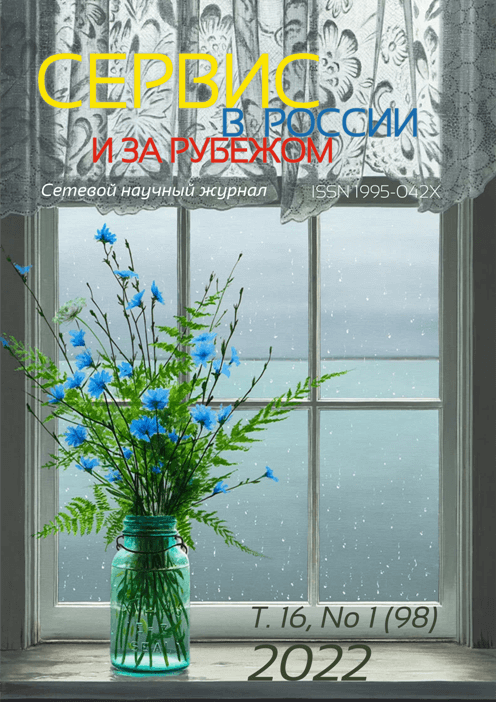A branded tourist route: The case of Shikoku Henro in Japan
DOI:
https://doi.org/10.24412/1995-042X-2022-1-36-44Keywords:
branded tourist route, cultural routes, Shikoku Henro, conceptual tourist spaceAbstract
The article is dedicated to the world brand route Shikoku Henro to identify successful elements of conceptualizing the tourist space. The study of approaches to the creation of thematic routes of different levels – global, international, national and regional, shows the lack of a unify terminological apparatus, approaches to definitions, and criteria of success. Building the system of national routes in Russia requires a special approach to the conceptualization of existing and new products, which is possible through the study of successful practices of such world-class routes. The article studies the key principles of conceptualizing tourist space of Shikoku Henro pilgrimage route. The authors identify the main tools of conceptualization, which immerse the visitor as much as possible in the subject of the route and form a special tourist experience. This study should become the basis for further research in the field of successful practices of global conceptual spaces and the elaboration of a brand route model.
Downloads
References
Afanasiev, O. E., & Afanasieva, A. V. (2019). Legends in tourism as a part of the experience economy and the process of forming the travel experience. Sovremennye problemy servisa i turizma [Service and Tourism: Current Challenges], 13(2), 7-20. doi: 10.24411/1995-0411-2019-10201. (In Russ.).
Eiki, H., & Reader, I. (1997). Pilgrimage and Peregrination: Contextualizing the Saikoku Junrei and the Shikoku Henro. Japanese journal of religious studies, 271-299.
Ferreira, S. L., & Muller, R. (2013). Innovating the wine tourism product: Food-and-wine pairing in Stellenbosch wine routes. African Journal for Physical Health Education, Recreation and Dance, 19(sup-3), 72-85.
Jimura, T. (2016). World heritage site management: a case study of sacred sites and pilgrimage routes in the Kii mountain range, Japan. Journal of Heritage Tourism, 11(4), 382-394.
Ma, X., Wang, X., Zhang, B., & Tang, A. Spatial Evolution of Rural Built Heritage Guided by the Construction of Cultural Routes.
Majdoub, W. (2010). Analyzing cultural routes from a multidimensional perspective. Alma-tourism-Journal of Tourism, Culture and Territorial Development, 1(2), 29-37.
Moira, P., Mylonopoulos, D., & Konstantinou, G. (2021). Tourists, Pilgrims and Cultural Routes: The Case of the Kumano Kodo Route in Japan. International Journal of Religious Tourism and Pilgrimage, 9(3), 5.
Okawa, E. (2009). The development of Shikoku Henro: the formation and dissemination of a pilgrimage in pre-modern Japan: a case study of Shikoku (Doctoral dissertation, Univ. of Brit. Columbia).
Vapnyarskaya, O. I. (2020). Tourist routes in the state regulation. Sovremennye problemy servisa i turizma [Service and Tourism: Current Challenges], 14(1), 44-54. doi: 10.24411/1995-0411-2020-10105. (In Russ.).
Downloads
Published
How to Cite
Issue
Section
License
Copyright (c) 2022 O. E. Afanasiev, F. K. Gadimova, & D. V. Galkin

This work is licensed under a Creative Commons Attribution-NonCommercial-ShareAlike 4.0 International License.












